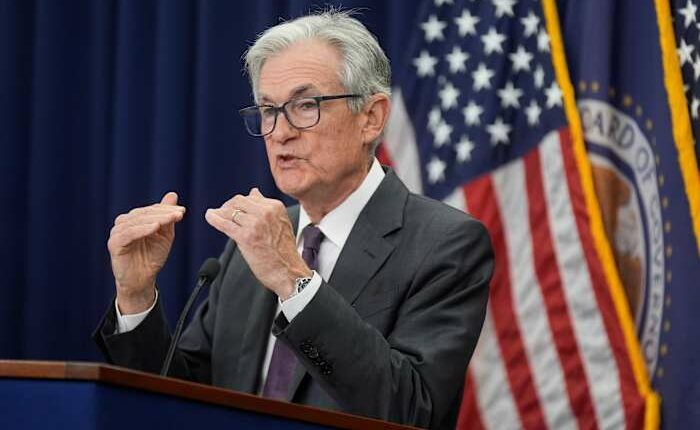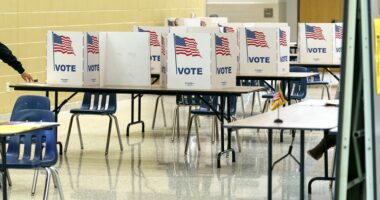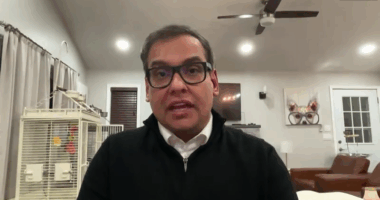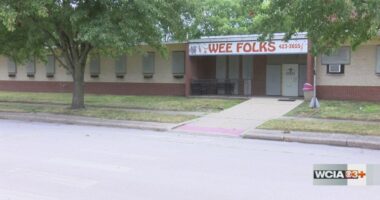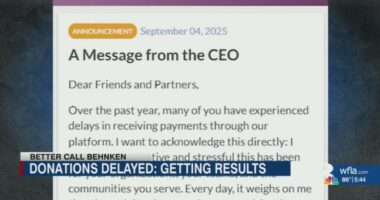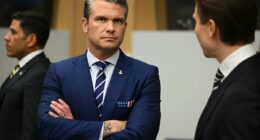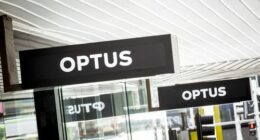Share this @internewscast.com

WASHINGTON – As the Federal Reserve prepares for its annual conference in Jackson, Wyoming, and a significant policy meeting in September, a crucial question looms bright: Is persistent inflation or the deceleration in hiring the larger economic concern right now?
Since April, lackluster job growth has inclined some officials to favor a potential rate cut by next month. However, numerous speeches and statements from other Fed policymakers highlight that inflation remains a significant issue.
This divergence in views could make the Fed’s decision during the September 16-17 meeting a tough one. Upcoming reports on employment and inflation, due before the meeting, will be pivotal in shaping the decision to either cut rates or maintain the current stance. Consequently, Fed Chair Jerome Powell’s address on Friday in Jackson will be scrutinized for insights on possible future actions.
If Fed officials express greater apprehension about the potential rise in unemployment and a weakening economy, they might consider lowering the rate to reduce borrowing costs and stimulate economic activity. Conversely, if concerns about high or escalating inflation prevail, especially with tariffs impacting global supply chains, they may favor maintaining higher rates to temper the economy and manage prices. Presently, the rate is at 4.3%.
Currently, Wall Street investors are largely convinced that a rate cut will occur in September. According to CME Fedwatch, futures prices indicate a 93% probability of a decrease.
These probabilities climbed sharply following the August 1 monthly employment report, which revealed that July’s job growth was underwhelming, with revisions showing significantly lower figures for May and June. Over the past three months, average job gains plummeted to merely 35,000, a stark drop from 123,000 a year earlier.
And Tuesday’s inflation report, which showed only a mild pickup in inflation at the consumer level and limited signs that tariffs were pushing goods prices higher, underscored the view of some officials that they could put inflation concerns aside and focus on shoring up the job market instead.
“With underlying inflation on a sustained trajectory toward 2%, softness in aggregate demand, and signs of fragility in the labor market, I think that we should focus on risks to our employment mandate,” Michelle Bowman, a member of the Fed’s governing board, said last week.
Yet Austan Goolsbee, president of the Federal Reserve’s Chicago branch, downplayed the weakness in hiring in remarks to reporters Wednesday. The slowdown in job gains could partly reflect the drop in immigration stemming from President Donald Trump’s border crackdown, Goolsbee said, rather than a weaker economy. He also pointed to the still-low unemployment rate of 4.2% as evidence that the job market is solid.
This week’s inflation report included some warning signs, Goolsbee added: Prices of many services that aren’t affected by tariffs, such as dental care and air fares, jumped, a sign that inflation may not be in check.
“That was the most concerning thing in the inflation report, and if that persisted, we would have a hard time getting back to 2%,” Goolsbee said, referring to the central bank’s inflation goal. “I am still hopeful that will not be a lasting problem.”
Fed officials also disagree on how tariffs will affect inflation going forward. Many increasingly believe the duties will result in simply a one-time boost to prices that will quickly fade and not lead to ongoing inflation.
“Tariffs will boost inflation in the near term, but likely not in a persistent way” that would require the Fed to keep rates elevated, Mary Daly, president of the Fed’s San Francisco branch, said in a recent speech.
Daly also said the labor market has “softened” and suggested the Fed “will likely need to adjust policy in the coming months.”
However, Raphael Bostic, president of the Fed’s Atlanta branch, said Wednesday that the tariffs could lead to longer-term inflation if they cause more manufacturers to shift output from lower-cost locations overseas back to the United States, or to other countries with higher wages. Such a change would be more than just a one-time shift.
“You’re going to see fundamental structural changes if this is successful,” Bostic said in remarks in Red Bay, Alabama. “It is actually a different economy.”
In that scenario, Bostic said, he would prefer to wait “until we have a little more clarity.” And he added that with unemployment low, “we have the luxury to do that.”
Thursday’s July wholesale price report, which showed a sharp jump in goods and services prices before they reach the consumer, did make one move less likely: A half-point cut in September, as suggested by Treasury Secretary Scott Bessent.
Alberto Musalem, president of the Fed’s St. Louis branch, who votes on Fed policy this year, said that a reduction of that size is “unsupported by the current state of the economy, and the outlook for the economy,” in an interview on CNBC.
Tim Duy, an economist at SGH Macro, said Thursday that the Fed may have to raise its inflation forecast at its September meeting when it provides its latest set of quarterly economic projections. The central bank’s policymakers currently expect inflation, excluding volatile food and energy, to reach 3.1% by the end of this year, yet inflation is already near that level.
Cutting rates at the September meeting would be hard for the Fed if it is also forecasting higher inflation, Duy said.
“There are things that could happen that would push the Fed off the path” toward a rate cut, he said. “We’re not paying adequate attention to those risks.”
Copyright 2025 The Associated Press. All rights reserved. This material may not be published, broadcast, rewritten or redistributed without permission.
